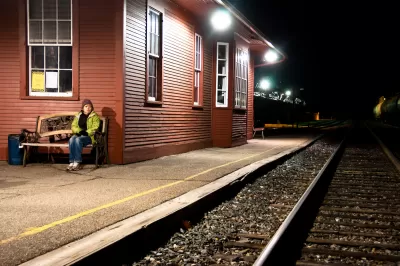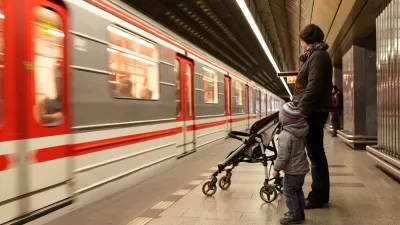People of different genders, ages, and abilities experience transportation differently. But policies aren’t designed that way.

Writing in Streetsblog USA, Sara Ortiz Escalante argues that “road safety is gendered,” and that the dominant transportation planning paradigm fails to serve most demographics, often directly putting them at higher risk.
Women, men, and people with other gender identities have different mobility patterns. But transportation policies have been designed prioritizing androcentric, ethnocentric, and classist mobility systems, responding to the needs of a single model of a person: a white, able-bodied, middle-class adult male with a paid job who drives each morning from a residential suburb into the central business district and home each night.
For Ortiz Escalante, “mobility policies that prioritize men’s movement have built social and gender inequalities into our very streets.” Ortiz Escalante calls for viewing “Mobility from a feminist perspective.” The article recommends expanding the concept of safety to fully include and understand the needs of all types of road and transit users such as women, people with disabilities, and children.
For example, “women move mostly on foot or by public transport, increasing their exposure to traffic crashes. They are more likely to make several stops in one journey to shop for groceries, pick up or drop off dependents, and run other errands, and are more likely to travel with minors or dependents due to their socially imposed role as caregivers.”
As other researchers have pointed out, designing roads and transportation policies to be more inclusive, known as universal design, can benefit all groups.
FULL STORY: Mobility Safety from a Feminist Perspective

Alabama: Trump Terminates Settlements for Black Communities Harmed By Raw Sewage
Trump deemed the landmark civil rights agreement “illegal DEI and environmental justice policy.”

Planetizen Federal Action Tracker
A weekly monitor of how Trump’s orders and actions are impacting planners and planning in America.

The 120 Year Old Tiny Home Villages That Sheltered San Francisco’s Earthquake Refugees
More than a century ago, San Francisco mobilized to house thousands of residents displaced by the 1906 earthquake. Could their strategy offer a model for the present?

In Both Crashes and Crime, Public Transportation is Far Safer than Driving
Contrary to popular assumptions, public transportation has far lower crash and crime rates than automobile travel. For safer communities, improve and encourage transit travel.

Report: Zoning Reforms Should Complement Nashville’s Ambitious Transit Plan
Without reform, restrictive zoning codes will limit the impact of the city’s planned transit expansion and could exclude some of the residents who depend on transit the most.

Judge Orders Release of Frozen IRA, IIJA Funding
The decision is a victory for environmental groups who charged that freezing funds for critical infrastructure and disaster response programs caused “real and irreparable harm” to communities.
Urban Design for Planners 1: Software Tools
This six-course series explores essential urban design concepts using open source software and equips planners with the tools they need to participate fully in the urban design process.
Planning for Universal Design
Learn the tools for implementing Universal Design in planning regulations.
Clanton & Associates, Inc.
Jessamine County Fiscal Court
Institute for Housing and Urban Development Studies (IHS)
City of Grandview
Harvard GSD Executive Education
Toledo-Lucas County Plan Commissions
Salt Lake City
NYU Wagner Graduate School of Public Service





























